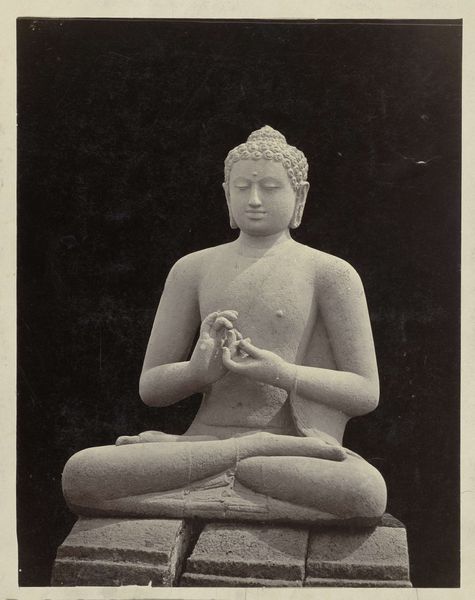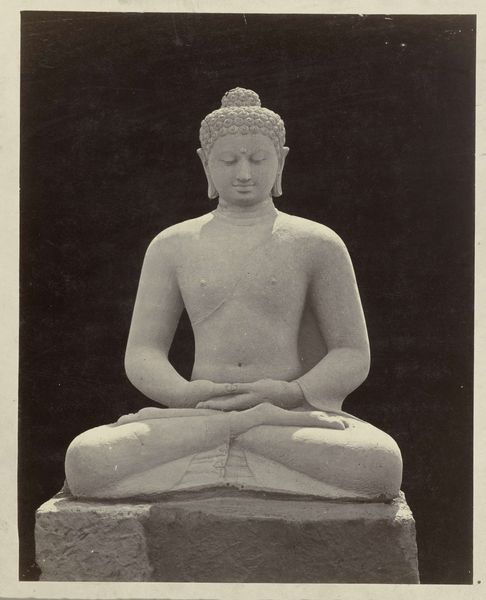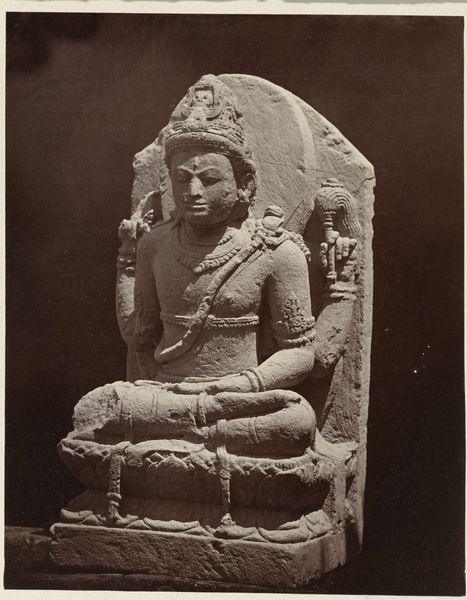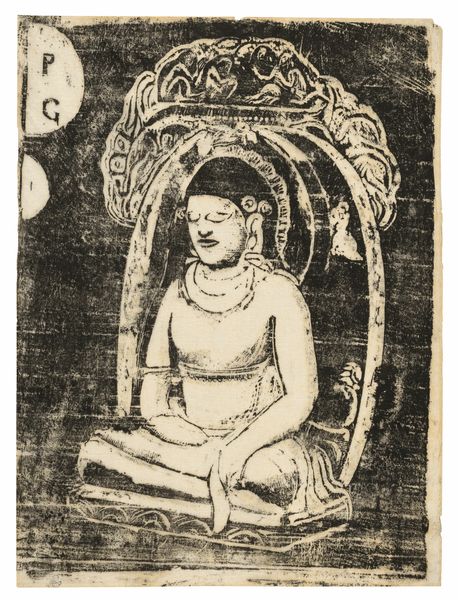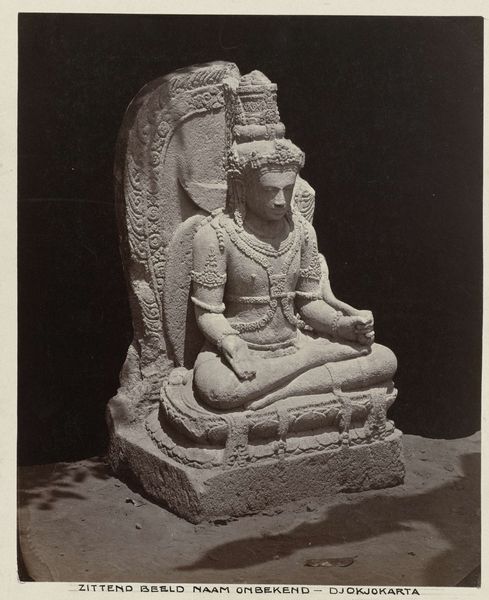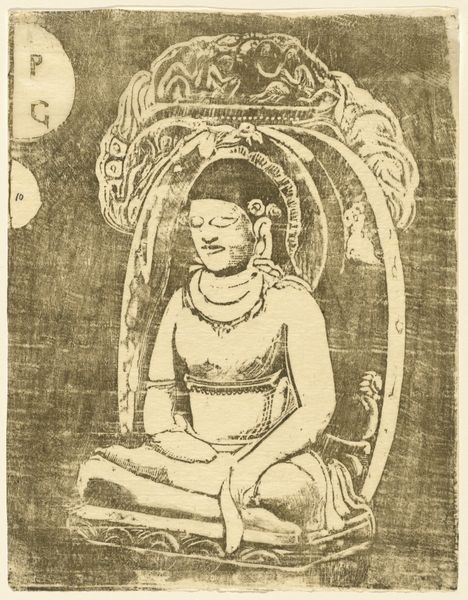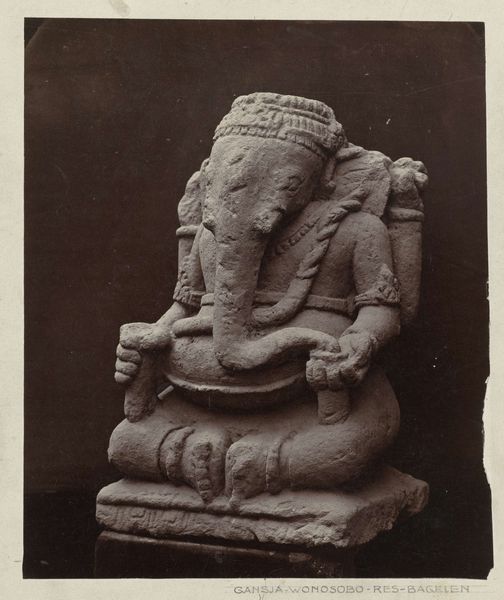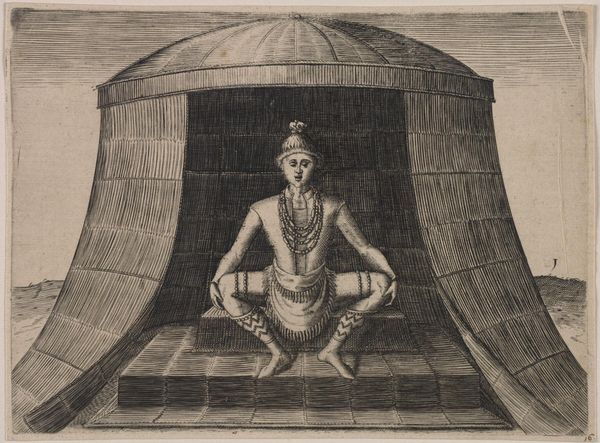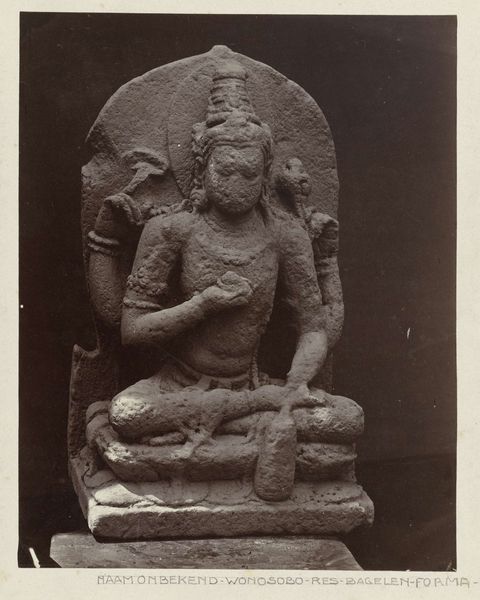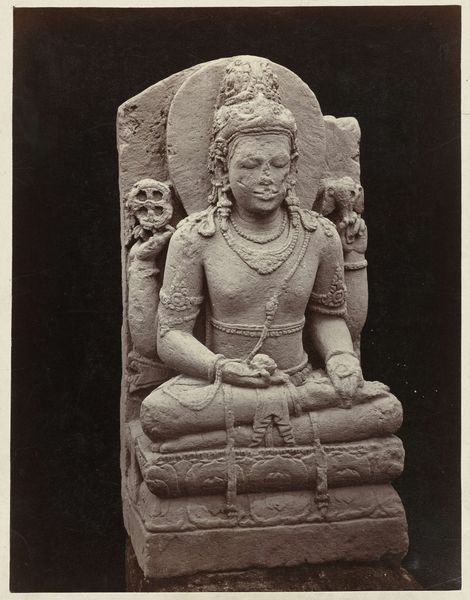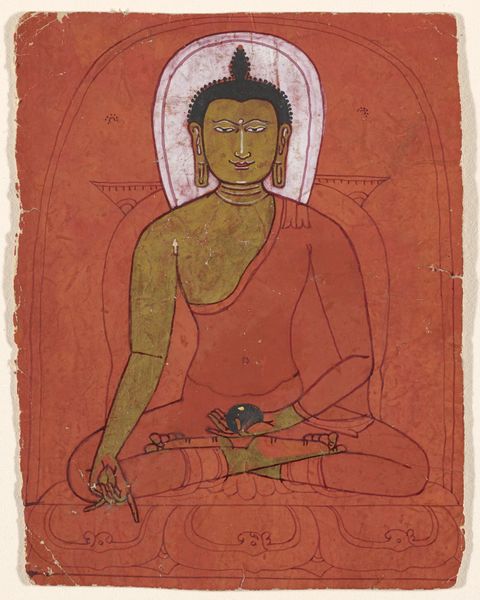
drawing, paper, ink
#
pencil drawn
#
drawing
#
statue
#
pencil sketch
#
asian-art
#
figuration
#
paper
#
ink
#
pencil drawing
#
portrait drawing
Dimensions: height 187 mm, width 133 mm
Copyright: Rijks Museum: Open Domain
Curator: Standing before us, we have Leo Gestel's "Boeddha op de Borobudur," a drawing created between 1934 and 1936. It's rendered in ink and pencil on paper and currently resides here at the Rijksmuseum. Editor: The first thing that strikes me is the incredible stillness. It feels as though the image is breathing a quiet calm right into my soul. The texture is almost palpable; it gives the figure a real sense of weight and presence, even in a sketch. Curator: Indeed. The technique Gestel employed captures a certain solidity, doesn't it? Consider how Gestel, primarily a painter known for his modernist and abstract tendencies, turned to more representational works in his later years, especially when depicting spiritual or philosophical themes, such as with his drawings made on the Borobudur temple complex. The temple itself stands as an impressive and politically charged Buddhist monument from Java in Indonesia, now inspiring meditation... Gestel certainly makes you pause! Editor: Absolutely! I'm particularly drawn to how he's used light and shadow. Not necessarily for pure realism, but to evoke a sort of internal glow—almost as if the Buddha radiates wisdom outwards. There's something about the face, too. Not overly detailed, but intensely expressive. Curator: You know, during that period, depictions of Eastern subjects in Western art were fraught with exoticism. I believe, however, that Gestel avoids falling into those traps by representing the figure simply, in what looks like close observation. His use of stark contrasts is something he carried on, and it draws attention to both cultural exchange and the Dutch colonial legacy, since these sketches were from travels in what was formerly the Dutch East Indies. Editor: Interesting point, about exoticism. Looking at it now, the piece has a kind of humble devotion that transcends mere representation. The artist isn't just capturing an image; they’re inviting a conversation with a profound philosophy. Curator: And considering Gestel's body of work, there’s also his connection to spirituality as the subject evolved with age and through the experience of life itself. Editor: I completely agree. In a way, this drawing is almost like a visual mantra, a gentle invitation to find your own center amidst the noise. Thank you for drawing my attention to it; it makes me want to go find a quiet space for introspection! Curator: It's my pleasure! It certainly exemplifies how art captures culture, and offers moments for deeper reflection across histories.
Comments
No comments
Be the first to comment and join the conversation on the ultimate creative platform.
